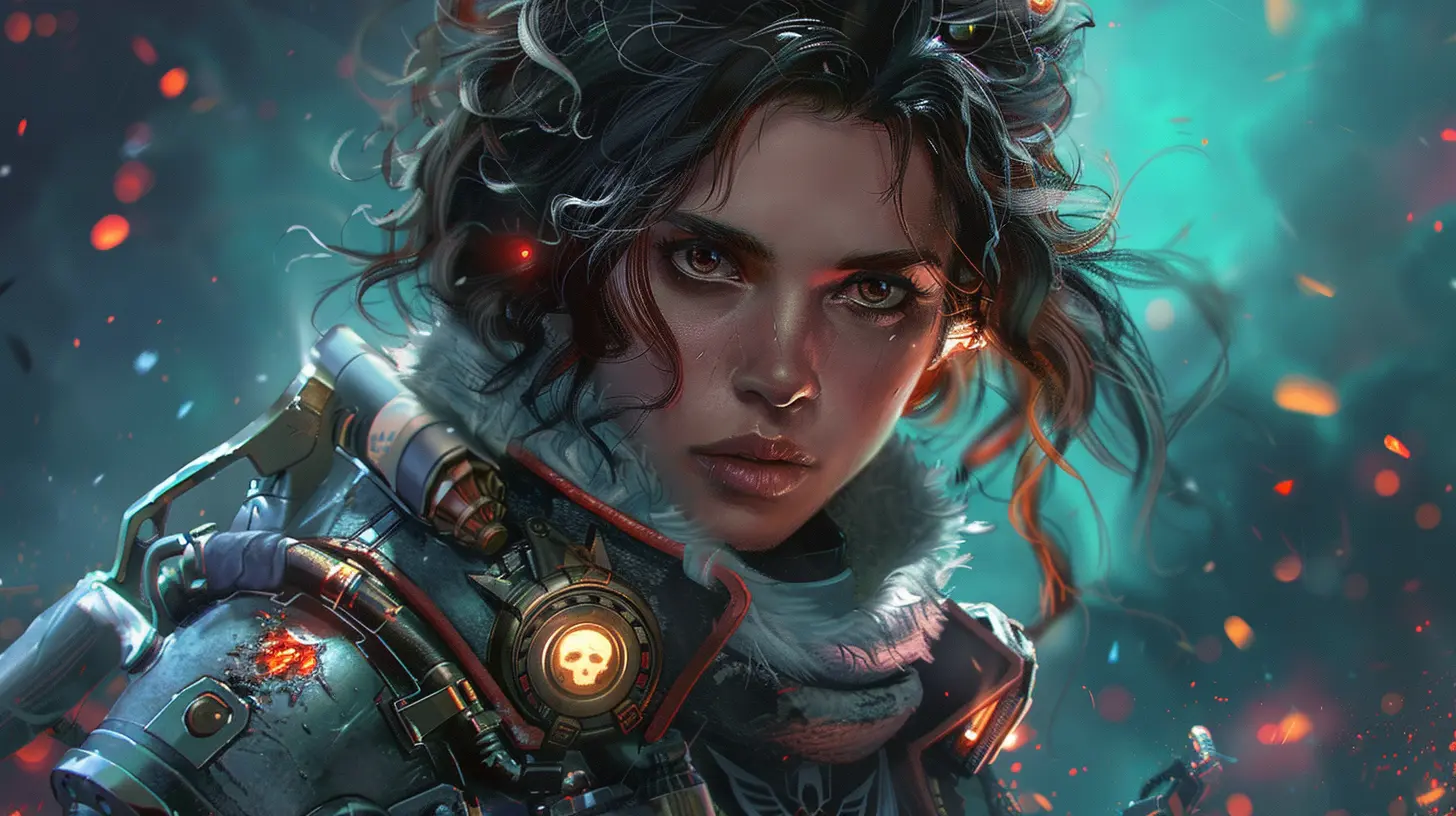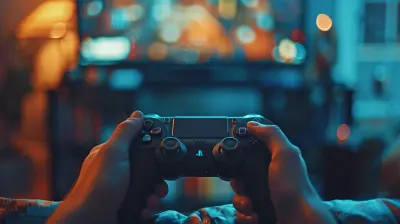Can In-Game Purchases Ever Be Truly Fair?
20 May 2025
Let's get this straight: in-game purchases are a part of modern gaming, whether we like them or not. Love 'em or hate 'em, they're here to stay. And we’ve all been there—spending hours grinding for that one rare item while someone else just buys it with a few clicks. It's frustrating, right? It begs the question: Can in-game purchases ever be truly fair? Well, buckle up, because we’re diving deep into this sticky subject.
The Rise of In-Game Purchases: A Quick Look Back
To understand fairness, we need to talk about how in-game purchases came about. Back in the day—think early 2000s—buying a game meant you were done spending. You’d fork over $40 or $50, get your disc, and play uninterrupted. DLCs (downloadable content) popped up later, and most of us didn’t mind because they added well-thought-out expansions to games we already loved.Fast forward to today, and in-game purchases flood nearly every corner of gaming. From cosmetic skins to game-altering weapons, you can buy just about anything. While some games, like Fortnite and League of Legends, sell strictly cosmetic items, others—looking at you, pay-to-win mobile games—offer upgrades that directly impact gameplay. And that’s where the fairness debate kicks into high gear.
What’s the Deal with "Fairness" Anyway?
Before we answer the big question, let’s define what "fair" means in gaming. Most gamers agree that fairness boils down to one thing: equal opportunity. It shouldn’t matter if you’re a broke college student squeezing in an hour of gameplay between classes or a millionaire with cash to burn. Everyone should have the same shot at success, right?But here’s the kicker—developers need to make money. Creating games isn't cheap. Between huge teams, years of development, and skyrocketing marketing costs, game prices alone can’t sustain the industry anymore. In-game purchases fill that gap. So, the question becomes: Is it possible to monetize games without stepping all over fairness?
When In-Game Purchases Work Well
Not all in-game purchases are villains twirling their mustaches. Some are actually harmless or even beneficial to the gaming experience. Let’s break it down.1. Cosmetics-Only Purchases
Think of games like Overwatch, Valorant, or Apex Legends. They let you buy skins, emotes, or sprays that have zero impact on gameplay. Whether your character looks like a fearless warrior or a walking meme, it doesn’t matter—you’re still on equal footing with everyone else. Here, fairness stays intact because these purchases are completely optional and don't tip the balance in anyone’s favor.It’s like customizing your car—you can splash on fancy rims if you want, but it won’t make the car faster than anyone else’s.
2. Battle Pass Systems
Another solid system is the Battle Pass, which rewards players for simply playing the game. Whether you pay for the premium version or stick with the free tier, the core gameplay remains the same. Buying the Battle Pass just speeds up progress or unlocks exclusive, non-essential goodies. Games like Call of Duty: Warzone and Fortnite use this system effectively, and (for the most part) players are cool with it.Why does this feel fair? Because it respects the grind. You’re still earning rewards by putting in the time and effort, even if you don’t throw money at the screen.
3. Expansions/DLCs
Then there are good ol' expansions. These are like sequels inside the same game—think The Witcher 3’s Blood and Wine or Destiny 2’s regular content packs. You’re paying for more content, but you’re not forced to buy it to enjoy the base game. It’s fair because it’s additive, not exploitative.
The Dark Side of In-Game Purchases
Of course, there’s a flip side to this coin. Not all in-game purchases are created equal. Some practices are less about enhancing the gaming experience and more about milking players for every dollar they’ve got. And honestly? That’s where things get messy.1. Pay-to-Win (P2W)
Ah, the infamous pay-to-win model. In these games, spending real money directly gives you an advantage. Maybe it’s a weapon that deals extra damage or a character with unbeatable stats. Whatever the case, paying players dominate while free-to-play users are left in the dust.It’s like showing up to a marathon only to find out some runners are driving cars. Fair? Not even close. Games like this, especially on mobile platforms, are often referred to as "wallet battlers." Deep pockets equal easy wins—but that’s not exactly the competitive spirit gaming is built on.
2. Loot Boxes and Gacha Mechanics
Let’s talk about loot boxes—those sneaky little treasure chests that hold randomized rewards. You pay real money but have no idea what you’re actually buying. It’s basically gambling, and it’s no surprise that loot boxes have sparked outrage (and some government crackdowns) worldwide.Games like FIFA Ultimate Team and Genshin Impact thrive on these mechanics, but here’s the problem: They prey on human psychology. Ever heard of the sunk cost fallacy? The more money you spend, the harder it is to stop—because hey, the next box might finally have what you’re looking for. Spoiler alert: It probably won’t.
3. Time-Gated Progress
Some games limit the amount of progress you can make unless you pay up. For example, your energy bar might deplete after five levels, forcing you to either wait hours or buy refills. Sure, you can technically keep playing for free, but the experience is intentionally slowed down to nudge you toward spending money.It’s like waiting in line at an amusement park while VIP ticket holders waltz to the front. Is it fair? Not in the slightest—and it’s a frustrating experience for anyone who just wants to enjoy the game.
Can Developers Strike a Balance?
So, is there a way to implement in-game purchases without alienating players? Honestly, it’s tricky. But it’s not impossible. Developers can take steps to ensure fairness while still turning a profit.1. Transparency is Key
First and foremost, be upfront. Players should know exactly what they’re paying for. Whether it’s a cosmetic skin or a random loot box, transparency builds trust. Developers like Riot Games (creators of League of Legends) have done well by clearly stating what players get for their money.2. Separate Skill from Spending
If purchases don’t affect gameplay, there’s no problem. Simple as that. Keep the competition centered on skill, and let cosmetic purchases fund the studio. It’s a win-win for everyone involved.3. Reward Commitment
Instead of punishing free-to-play players, reward them. Offer meaningful rewards for consistent gameplay, and let paid options act as shortcuts—not necessities. This way, paying players don’t feel cheated, and free players still have the satisfaction of earning their way.The Role of Gamers in Shaping Fairness
Let’s not forget: gamers have power too. By supporting ethical games and calling out shady practices, we play a huge role in shaping the industry. If a game feels unfair or exploitative, don’t be afraid to vote with your wallet. Developers take notice when players speak up—just look at the backlash against EA’s loot boxes in Star Wars Battlefront II. The uproar forced them to rethink their monetization strategy.So, Can In-Game Purchases Ever Be Truly Fair?
The short answer? It depends. When done right, in-game purchases can coexist with fairness. Cosmetic-only purchases, Battle Pass systems, and DLCs all offer monetization without ruining the balance. But when greed takes over—hello pay-to-win mechanics and loot boxes—fairness goes out the window.At the end of the day, it’s up to both developers and players to push for a better system. Developers need to prioritize fun and fairness, while we, as players, need to support games that respect our time and money. Will we ever reach a perfect balance? Who knows. But one thing’s for sure: the conversation isn’t going away anytime soon.
all images in this post were generated using AI tools
Category:
In Game PurchasesAuthor:

Madeleine McCaffrey
Discussion
rate this article
4 comments
Sloane Wagner
This is an intriguing topic! Exploring how in-game purchases impact player experiences could reveal surprising insights about fairness in gaming.
June 18, 2025 at 3:35 PM

Madeleine McCaffrey
Thank you! I'm glad you find the topic intriguing. Examining in-game purchases is essential to understanding fairness and player experience in gaming.
Casey Evans
When profit meets play, fairness blurs—who's really winning?
June 1, 2025 at 4:15 PM

Madeleine McCaffrey
That's a thought-provoking point! The balance between profit and fairness in gaming is complex; true fairness often gets overshadowed by monetization strategies, making it essential to prioritize player experience alongside profits.
Presley Gilbert
This article raises important questions about the fairness of in-game purchases. While they can enhance gameplay, it’s crucial for developers to find a balance that respects all players, regardless of their spending. Ultimately, fostering a fair environment will benefit both players and the gaming community as a whole.
May 30, 2025 at 4:02 PM

Madeleine McCaffrey
Thank you for your thoughtful comment! I agree that finding a balance in in-game purchases is essential for fostering a fair gaming environment for all players.
Rosalind McIlwain
In-game purchases often benefit companies more than players.
May 25, 2025 at 4:41 PM

Madeleine McCaffrey
Thank you for your comment! It highlights a key concern in gaming. Balancing player benefits with company revenue is essential for creating a fair in-game purchase system.



